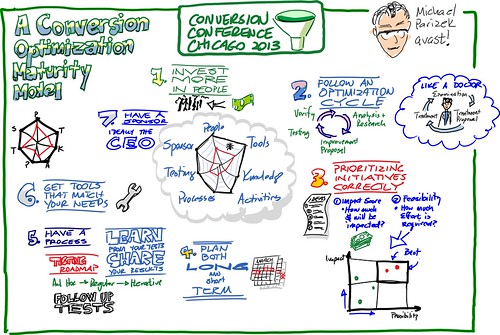
Your presentation will set off a cascade of content.
It was a few paragraphs from my book in a Chapter entitled “How Content Fuels Conversion.”
It started off pretty well, but it ended in a lie.
Amid my discussions of video and images; of draftsmen and imagemakers and storytellers appeared a few lines. They’re there on page 92.
Digital content has legs. One item of content can be cascaded into a variety of channels like a fountain of champagne glasses at a wedding.
For example, how many opportunities do your employees get to present at conferences, training sessions, seminars, and webinars? Film them and record good quality audio. This bubbly content fills the top glass of your cascade.
Have someone edit the video into a series of shorter videos, ripe for YouTube and other video services. You’ve just filled the next layer of glasses.
Share the slides used on slide-sharing services such as Slideshare and Scribd. Voila—another, wider layer glasses fills with sparkling champagne.
For just a few dollars, the video can be transcribed. Lay this out as a report or white paper and distribute it for lead generation. Another layer of glasses fills.
I go on to describe how this transcription turns into blog posts, social media posts and more. I then go on to tell the lie.
The transformations discussed in this example are often not time-intensive.
The truth is, that they are not as time-intensive as creating the content from scratch. But these transformations do take time.
My idea has been stolen
Since the publication of the book, I’ve tried to get someone to steal my idea so that I would have a resource to turn to. I’ve had conversations with a number of agencies and freelancers about why content is like champagne. Businesses are creating the champagne every day. They just need glasses, stacked just so to turn it their content into an online party.
Dust off one of your presentations
How many people saw that webinar you recorded last quarter? Most webinars draw less than 100 viewers. There are a lot more people out there who won’t watch a webinar, but who are qualified prospects. I invite you to dust off your webinar or presentation and turn it into a Slideshare presentation, blog posts, a report, an eBook – you choose the package.
Most importantly, create the content landing pages and social media posts that generate sales and leads. After all, this content is only valuable if it grows your business.
Every so often, your CEO is asked to speak about some aspect of the market. Every now and then, your tech guru is asked to talk about how brilliant your technology is. And how many times is your sales team pitching to audiences about your fantastic offering? Each of these moments is an opportunity for a cascade of content for your marketing efforts.
Is your presentation cascadeable?
Here’s how you can tell if your content is a good match for the cascade:
- Do you have recorded audio or video of the presentation? Slides are rarely enough to convey the understanding needed for someone to do a good job creating content. The quality of your audio need only only be good enough to generate a transcript.
- Do you have presentation slides? Video and recorded webinars don’t provide the resolution needed for visuals.
- Is your presentation just slides full of bullets? These kinds of presentations don’t typically make for good visual content such as infographs, eBooks and reports.
Other than that, there’s no risk in uploading your presentation for us to look at. We don’t ask for a credit card.
The Audience is Bigger Than The Room
The audience that initially heard the presentation is tiny compared to the audience for the cascade of content it will generate.
- Cascade content is shared with a larger audience via email and social networks.
- Cascade content increases frequency with multiple slices from the same presentation.
- Cascade content engages more of the audience through text, audio and images.
Photo courtesy paulodonnel on Flickr under the creative commons.




 Your presentation will set off a cascade of content.
Your presentation will set off a cascade of content.








